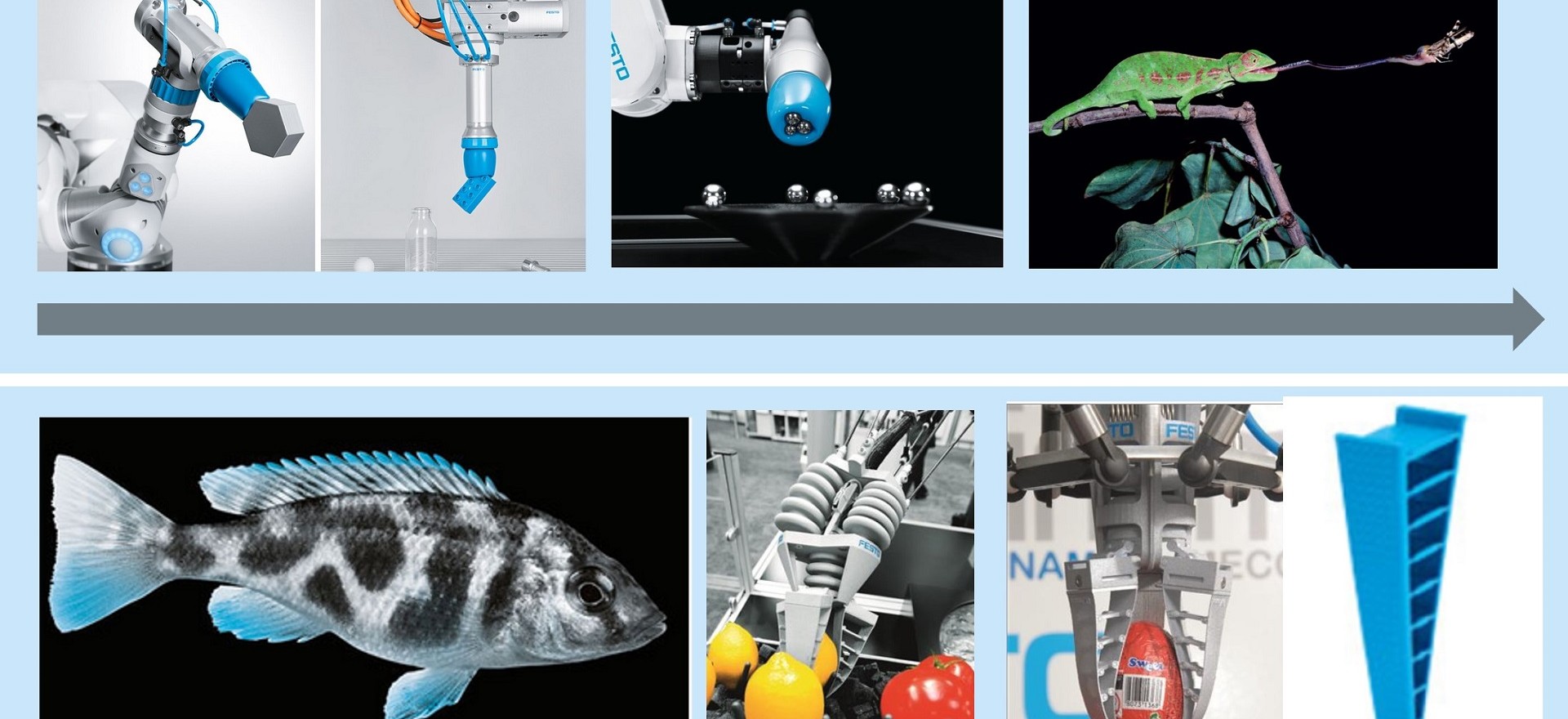

How does working according to the bionic principle work?
The lotus effect or the function of a Velcro fastener, car tires whose braking effect is enhanced along the lines of cats' paws, or rims modeled on diatoms. The list of such nature-oriented product developments is incredibly long - and extremely versatile. And it is precisely this versatility that makes the subject so exciting for a wide variety of industries, but also for training and further education, as well as for teaching in schools.
Bionics combines biology and technology and means learning from nature and transferring the findings to the world of technology. There are two methods how engineers and developers proceed: The top-down and bottom-up method.
In the top-down process, developers look for a solution from nature to solve a technical problem.
Example product at Festo: Adaptive Shape Gripper DHEF - model from nature: chameleon tongue shot. This is a further development of the FlexShapeGripper from the Bionic Learnin Network.
The bottom-up process runs in opposite directions. First, the researchers look to nature and research a natural phenomenon, from which they can derive a technical implementation.
Example model from nature: fish tail fin (Fin Ray Effect) - Product at Festo: Adaptive gripper finger DHAS. The DHAS is already being used in the food industry, for example for sorting fruit and vegetables.
core range